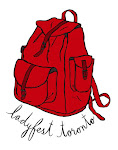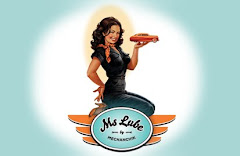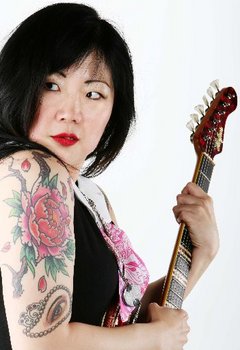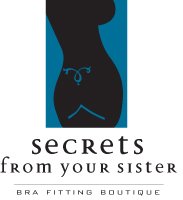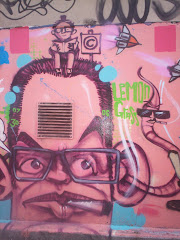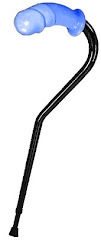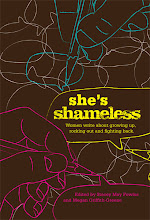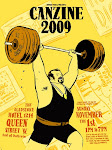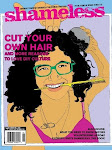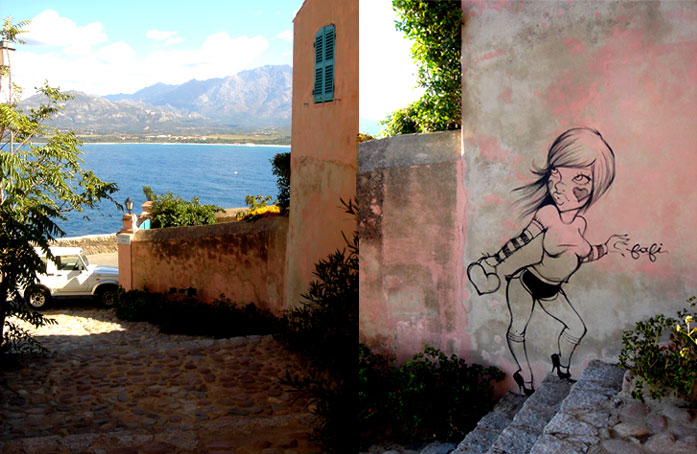 “Is this just another bisexual chic moment or is this generation having its own bisexual revolution?” asked directors Brittany Blockman and Josephine Decker in their documentary Bi the Way, which was featured at Toronto’s Inside Out Film Festival on Sunday May 17th at the Royal Ontario Museum.
“Is this just another bisexual chic moment or is this generation having its own bisexual revolution?” asked directors Brittany Blockman and Josephine Decker in their documentary Bi the Way, which was featured at Toronto’s Inside Out Film Festival on Sunday May 17th at the Royal Ontario Museum.The director duo traveled across America, from New Orleans to Nevada to New York to Utah in order to find out if falling somewhere between gay and straight is possible or just a passing trend.
They followed the stories of five individuals while interviewing a slew of teens, adults, media professionals, sexual researchers and psychologists about whether being attracted to both sexes can be normal.
“I think they’re just half foot in the closet and half foot out,” said one woman on camera, laughing and widening her stance for emphasis.
Many interviewees agreed with this point of view, noting that popular culture practically began endorsing bisexuality with titillating same-sex moments on the programs like the O.C., and even more visibly when Britney Spears and Madonna kissed.
“MTV was holding a mirror up to their audience and giving their audience a blowjob,” said Dan Savage, The Stranger’s “Savage Love” sex columnist. Savage noted that youth who believe they are bisexual might realize otherwise in 10 years.
There are some examples in the film of youth who identify as bisexual but leave the audience unsure if they just haven’t figured out their identity.
David is one of those individuals. The 24-year-old had girlfriends in the past and now casually dates Kevin, but wants a stable relationship with him. His bisexuality is questioned by his parents, who accept him but don’t understand him.
Then there’s Pam, a former cheerleader who was expelled for getting caught kissing a female classmate and had to face the wrath of her conservative father when he discovered her bisexuality. “Girls are catty bitches and guys are pigs…Can’t get along with any of them but you can’t live without them either,” she said.
The film mentioned a study done at Northwestern University in the U.S. which tested how sexual responses to pornography factored into women’s sexual orientation. Those tested viewed both heterosexual and lesbian porn clips, interspersed with landscape scenes. A tampon-shaped probe in their vaginas measured arousal and found that regardless of the type of erotic videos, women responded similarly.
A related study was conducted the following year with men and showed that they were predominantly turned on by either straight or gay porn, but not both.
“My question is, what kind of films did they show them? Was it good porn?” asked a middle-aged, bisexual man, incredulously. “That study showed that I don’t exist.”
One thing the study may have revealed is that bisexuality, at least in the mainstream, is more common among women, said a female sex researcher at Northwestern. Or maybe they just prefer the scenery. “Watching a naked man walk on the beach is about as stimulating as watching a landscape,” she said.
Although there are those in the film who dispute it, Bi the Way showed that a new generation of young people have redrawn the map of sexuality and for many bisexuality is more than a roadside attraction.
“Why can’t I have my cake and eat it too?” asked Tahj, a bisexual 18-year-old from New York.
Dan Savage summed it up best, “Do what turns you on, because you can’t run away from yourself.”
*Published in the June issue of The Ryerson Free Press
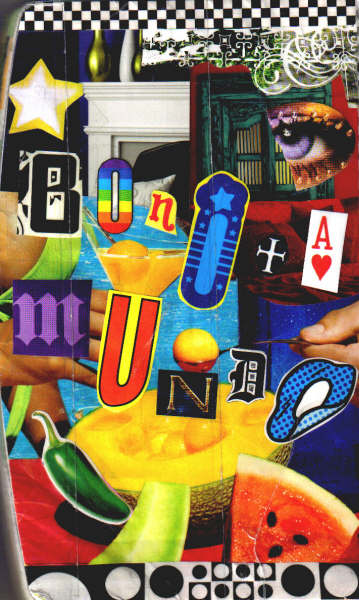
 A stream of customers and artistic admirers wandered amid vibrators, porn and
A stream of customers and artistic admirers wandered amid vibrators, porn and  Sachse was born with a rare condition known as Freeman-Sheldon Syndrome and has scoliosis which curves the spine.
Sachse was born with a rare condition known as Freeman-Sheldon Syndrome and has scoliosis which curves the spine. “It makes you uncomfortable because I’m naked but I’m also not looking at you in this very renaissance-woman-naked-on-a-couch kind of passive stare, I’m engaging you,” she said.
“It makes you uncomfortable because I’m naked but I’m also not looking at you in this very renaissance-woman-naked-on-a-couch kind of passive stare, I’m engaging you,” she said. The
The  “My method of dealing with stuff is tongue and cheek kind of humour. I’ve come to realize doing the work itself is enough in terms of addressing it. Adding to the dialogue is enough.”
“My method of dealing with stuff is tongue and cheek kind of humour. I’ve come to realize doing the work itself is enough in terms of addressing it. Adding to the dialogue is enough.” “I couldn’t say the word ‘rape’ for a long time,” said Larisa Storisteanu, a volunteer with the
“I couldn’t say the word ‘rape’ for a long time,” said Larisa Storisteanu, a volunteer with the  Storisteanu, a former part-time visual arts student at Ryerson, first heard about CLP a few years ago. She was raped by a former employer and wanted to participate in an event she felt was a positive way of reconciling her experience with violence. Storisteanu is also assistant director of Canadian Artists Against Sexual Assault, a student group that has raised funds for the Toronto Rape Crisis Centre by auctioning artwork created by women who have survived violence.
Storisteanu, a former part-time visual arts student at Ryerson, first heard about CLP a few years ago. She was raped by a former employer and wanted to participate in an event she felt was a positive way of reconciling her experience with violence. Storisteanu is also assistant director of Canadian Artists Against Sexual Assault, a student group that has raised funds for the Toronto Rape Crisis Centre by auctioning artwork created by women who have survived violence. The first CLP event took place in 1990 as part of the “Take Back the Night” march and rally in Massachusetts. The founding group felt that hanging laundry, long seen as women’s work, would be a natural medium to express provocative, educational and constructive art. The project has now spread worldwide.
The first CLP event took place in 1990 as part of the “Take Back the Night” march and rally in Massachusetts. The founding group felt that hanging laundry, long seen as women’s work, would be a natural medium to express provocative, educational and constructive art. The project has now spread worldwide. One woman’s story stood out for Tran: “A lot of times women don’t know it’s abuse until it’s too late.”
One woman’s story stood out for Tran: “A lot of times women don’t know it’s abuse until it’s too late.” She feels that women lack the outlets to express their experiences with violence and can remain silent out of fear that an abusive significant other will discover their disclosure. The Clothesline provides a safe place to tell those stories.
She feels that women lack the outlets to express their experiences with violence and can remain silent out of fear that an abusive significant other will discover their disclosure. The Clothesline provides a safe place to tell those stories. But women aren’t the only survivors of violence. Earlier in the afternoon a man who had been abused by two of his former wives asked Hirjee if there was room for men who were victims. “Why not?” replied Hirjee.
But women aren’t the only survivors of violence. Earlier in the afternoon a man who had been abused by two of his former wives asked Hirjee if there was room for men who were victims. “Why not?” replied Hirjee. V-Day also sold “I (heart) vagina” t-shirts and buttons and received donations for future campaigns, as well as for the
V-Day also sold “I (heart) vagina” t-shirts and buttons and received donations for future campaigns, as well as for the  Wearing a long, patchwork skirt, with a feather tied in her hair, Storisteanu sat beside the red t-shirt that she decorated the previous day, which symbolized rape.
Wearing a long, patchwork skirt, with a feather tied in her hair, Storisteanu sat beside the red t-shirt that she decorated the previous day, which symbolized rape.




